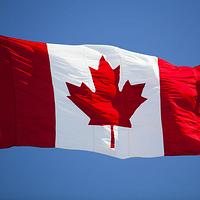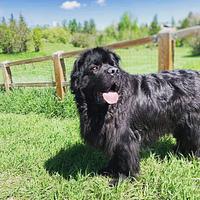Share your craft projects
Make new craft buddies
Ask craft questions
Blog your craft journey

shipwright
2135 posts
and
113 followers
in over 11 years
in over 11 years
Shipyard Memories #22: Finishing The Build
This is
part 22
in a
22 part
series:
Shipyard Memories
I'm afraid that the photos are a little scarce from here on but I'll do what I can with what there are.
This photo shows the keel halves ready for gluing. Making the 3" thick keel out of two pieces makes it much easier to fit it to the hull as the joint line to the hull on each half can be cut on the appropriate angle(s) on the bandsaw. When assembled the two will make a vee that fits the hull perfectly. You will also notice that the pieces are cut off in line with where the shaft line will be. This allows us to cut a 45 degree angle on each of the four pieces that surround the shaft. When assembled we will have a diamond shaped hole on the approximate line of the shaft.

Here the halves are glued up. The forward end will be made up wilh smaller fitted blocks to fair into the hull. The stack of sticks on the left that look a little like pool cues are the cabin side / window posts. They are scarfed to be teak above the seat backs where they are seen and fir below the seat backs where they are hidden. Gotta watch those pennies.

The next two photos show the setup for final boring the hole for the shaft tube. This is done by first running a string from a spot exactly where the center of the engine coupling will be to the center of the diamond shaped hole in the back end of the keel. Second, a bearing block is set up on the keelson (inside keel) with a 1" hole in it for the boring bar. It is set up so that the string is centered in the hole and the hole lines up with the angle of the shaft. Then a second bearing piece (plywood this time) is set up just outside of the back of the keel, also lined up with the string.

When the boring bar is inserted into both bearings it may or may not be centered in the rough hole but successive cuts with it's fly cutter will expand the hole to the size of the shaft tube while correcting any misalignment in the smaller rough hole. Once bored the hole is cleared of any chips and the shaft tube is epoxied in. The shaft then slides into the tube and will align perfectly with the engine coupling.

Here the cabin sole and the seat shelves are in place. You can see the cut out for the engine box and the engine beds installed. The sole has been 'glassed and the facing on the seat shelf is glued in on the near end. The pieces for the far end facing are there ready to be installed. The seat shelves are solidly glued to the hull and perform a major stiffening function at an area where the hull takes lots of abuse. They also serve to keep the life jackets, stored under the seats, up off the floor which is washed daily.

We've jumped ahead a bit here. The decks, cabin sides and posts are in. Probably the most difficult thing in building these boats and getting them to look right is the alignment of these posts. They have to look right, that is converging from bottom to top and each post has to be parallel with it's opposite number on the other side and in the other end.They all have to be right from every angle as you walk around the boat. It can be a frustrating task because every time you make a little adjustment to make it look better in one place, it affects three or four other views. Together with the cabin sides they have to form a sort of flattened, elongated section of a cone.

The window tops / roof aprons are installed and the seat bases can be seen mounted on the seat shelf and secured to the posts. If you have good eyes you'll notice those half teak - half fir posts. Most of the joints from here on are unframed and held only by fillets of thickened epoxy. For example the cabin sides that you see here are filleted to the deck inside and out but there are no fastenings. They are epoxied to the posts and fastened with a few staples.

The last construction photo I have shows the roof being held to shape with a camber pattern and clamped to the apron piece. The only fastening that will be used to hold them together will be a fillet of epoxy inside and out. Both parts are 1/4" plywood. The camber pattern will stay there until the wheelhouse windows and top roof are in place. At that point the camber will be locked in and the area of the lower roof, inside the wheelhouse windows can be cut away. We painted the roofs before putting them up but left the area for the fillets unpainted.

Here are a few finished photos the will help you understand some of the last bit.



That's it for Stitch and Glue construction, and my shipyard memories. I hope that you have enjoyed these blogs as much as I have.
I have spent many years "happily messing about with boats" and wouldn't consider any of it to have been "work". I have enjoyed immensely sharing some of my good old days with those of you who have been interested in following my meanderings and I have been humbled and flattered by your interest and your kind comments.
Thanks for dropping in. ... Really
Paul
The early bird gets the worm but its the second mouse that gets the cheese.
4 Comments
Thanks for dropping in. ... Really
Shiiit....Thanks for having me....Really!
I've enjoyed the whole series and learned a thing or 20. Thanks for sharing the journey Paul, much appreciated.
I've enjoyed the whole series and learned a thing or 20. Thanks for sharing the journey Paul, much appreciated.
The man in the suit has just bought a new car from the profit he's made on your dreams.
Thank You Paul for sharing your memories with Us here. I have really enjoyed reading through the series and learning in the process. You have been blessed with your skills and having the feeling of not being work.
Merry Christmas
Merry Christmas
Main Street to the Mountains
Way too cool Paul. I've enjoyed seeing your high level work on this and other forums. You are a true artisan and fantastic innovator.
Darrel
I just finished "binge reading" the last 15 or so entries. It was a lot of fun to follow along and see a part of your boat building history.
Thanks for taking time to put this together!
Thanks for taking time to put this together!












